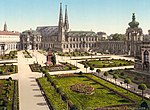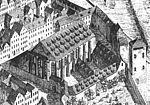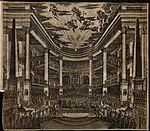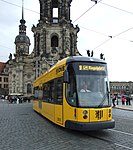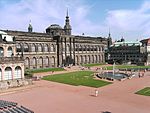Busmannkapelle
Chapels in GermanyFormer churches in DresdenGerman church stubsRoman Catholic churches in DresdenSaxony building and structure stubs
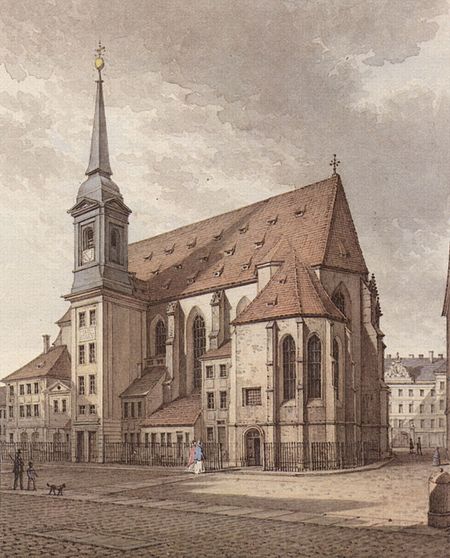
The Busmannkapelle was a side chapel of the Sophienkirche in Dresden. The chapel was built in 1400 when the Sophienkirche was still part of the city's Franciscan monastery. It was funded by the patrician Busmann family, who used it as a family and funerary chapel and after whom it was named. It was destroyed in February 1945 during the bombing of Dresden in World War II, but in 1994 plans were instigated to reconstruct the chapel on the same site as the Busmannkapelle Memorial, as a memorial to the church as a whole.
Excerpt from the Wikipedia article Busmannkapelle (License: CC BY-SA 3.0, Authors, Images).Busmannkapelle
Postplatz, Dresden Innere Altstadt (Altstadt)
Geographical coordinates (GPS) Address Website Nearby Places Show on map
Geographical coordinates (GPS)
| Latitude | Longitude |
|---|---|
| N 51.051295 ° | E 13.734924 ° |
Address
DenkRaum Sophienkirche
Postplatz
01067 Dresden, Innere Altstadt (Altstadt)
Saxony, Germany
Open on Google Maps

